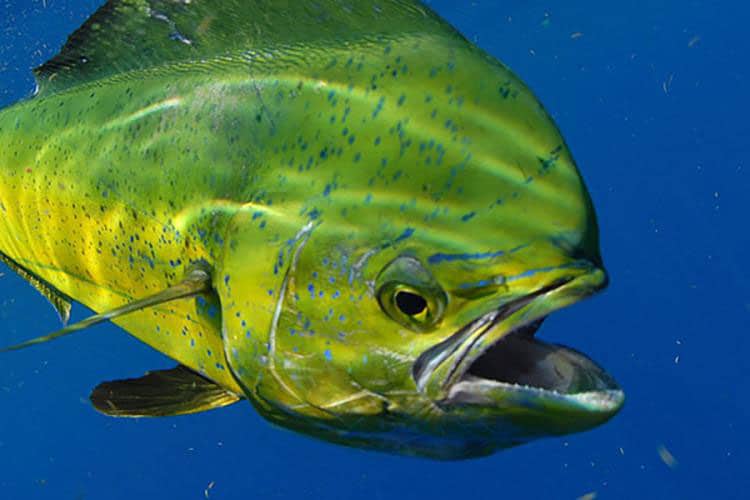
Offshore anglers should be prepared for significant changes to the federal regulations governing the taking of dolphinfish along the East Coast. That’s the word from Chris Burrows, chairman of the Dolphin/Wahoo Advisory Panel for the South Atlantic Marine Fishery Council.
Burrows has served on the federal council’s dolphin advisory panel for over a decade, and a meeting he attended in Charleston was eye-opening in the impacts Carolina dolphin anglers and others may face in the future.
He says two important proposed changes are on tap. One is that the 20-inch minimum size for dolphinfish could be extended south of the border of North and South Carolina, perhaps expanding to the entire East Coast of the Atlantic, including Maine where some fish are being caught these days.
The second important change the federal council may impose is a reduction in dolphin limits for individuals or for per boat harvest.
Burrows states in Carolina Sportsman that nearly 80 percent of U.S. East Coast dolphin are caught in Florida (65 percent) or North Carolina (23 percent). A dozen other East Coast states make up the remaining 20 percent of the annual dolphin catch.
Florida already has a 20-inch minimum size limit on federal-waters-caught dolphin. But the state’s close proximity to bluewater and expansive weedlines in the Gulf Stream are much more available to Florida anglers than for fishermen in other states, says Burrows.
“Expanding the (dolphinfish) size limit north may be well-intentioned,” says Burrows. “But I think it would do far more harm to charter boat anglers and the recreational experience in general than it would result in a benefit to the dolphin population.”
Burrows contends that North Carolina charter boats and recreational fishermen target smaller dolphin in summer when they’re prolific.
“This is the bread and butter of the charter fleet at the Outer Banks in July and August,” he contends. “More restrictive measures on what they can bring home will almost certainly mean reduced bookings. This in turn hurts hotels, restaurants, and other businesses in a tourism-based economy.”
Dolphin size restrictions will result in anglers culling, or releasing smaller dolphin, to upgrade to larger fish to keep. Burrows doesn’t know what the mortality rate of released dolphin is, but he believes it’s possible that more fish could be killed by the process than preserved.
He notes that dolphin are one of the fastest growing fish in the ocean and that they can spawn at 18 inches in size. Further, he states that dolphin have a 99 percent mortality rate in their first year of life.
Scientists also know that dolphin are comparatively short-lived, with fish over 5-years old rare to the species.
Bag limits on dolphin have been self-imposed by Outer Banks charter captains for years, with 10 fish per person dolphin limits deemed responsible for those tapping the fishery.
Burrows believes commercial long-line fishing operations have the potential to be most devastating to dolphin stocks along the Atlantic Coast. With current tight restrictions on longlining for sharks, tuna, billfish and other species, and with commercial bottomfishing also highly regulated, dolphin seem to be the most obvious target for commercial boats now.
“With basic longline gear, a basic commercial license, and a $50 operator’s card, anyone can longline dolphin,” states Burrows. “It is hard to find a weedline in May that doesn’t have longline gear set next to it.”
Burrows believes this has hurt the population of large dolphin and impacted the best fish for spawning. It’s also hurts Carolina charter fishermen.
“In 2015, for the first time in history, the commercial Annual Catch Limit for dolphin was met in June, which ended that fishery for the year,” Burrows continues. “Subsequent years have come close to the same levels.
“A limited and regulated longline fishery won’t hurt the stocks of these fish or the recreational fishery. But having it accessible to too many boats certainly can.”








